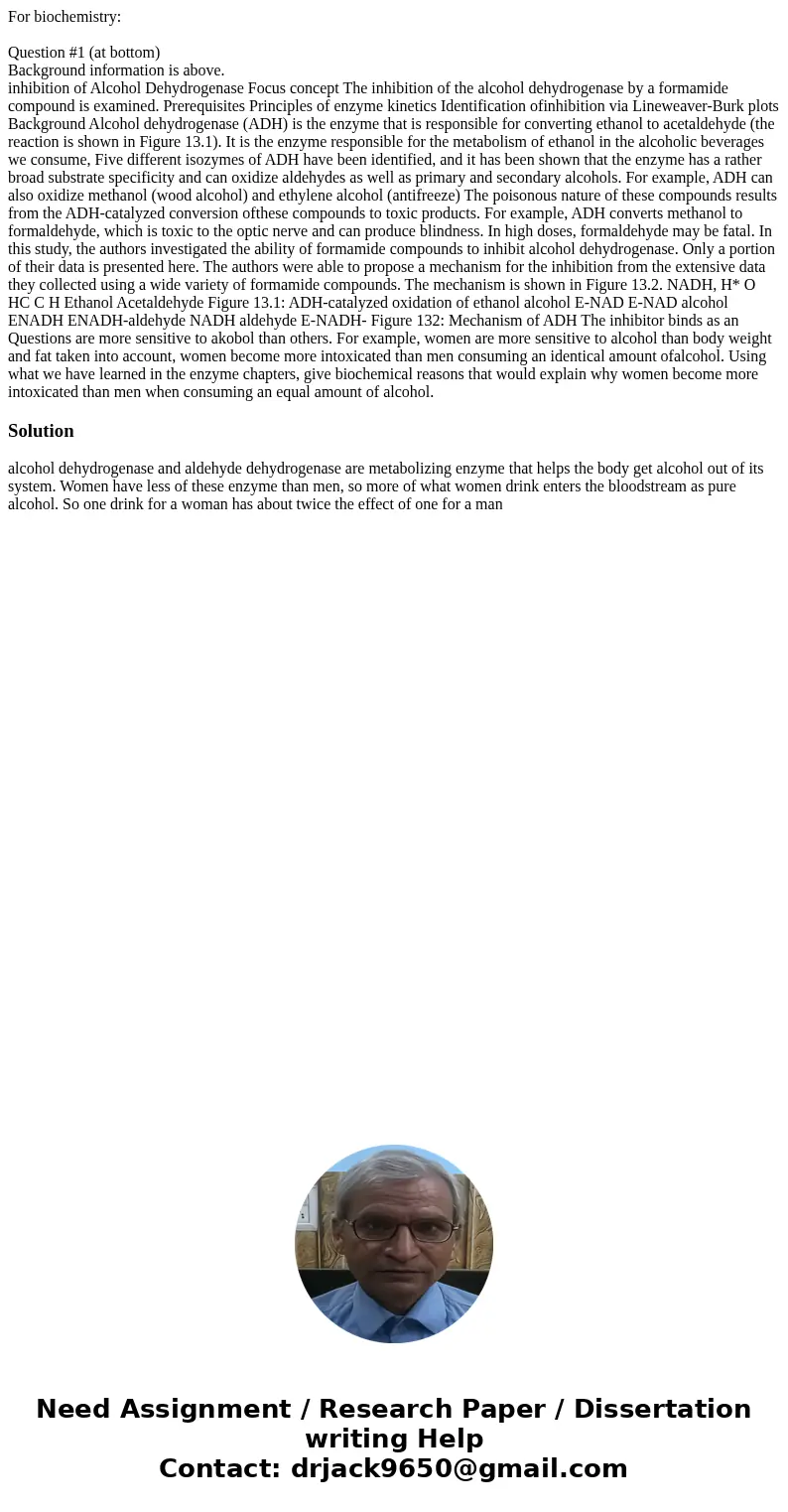For biochemistry Question 1 at bottom Background information
For biochemistry:
Question #1 (at bottom)
Background information is above.
inhibition of Alcohol Dehydrogenase Focus concept The inhibition of the alcohol dehydrogenase by a formamide compound is examined. Prerequisites Principles of enzyme kinetics Identification ofinhibition via Lineweaver-Burk plots Background Alcohol dehydrogenase (ADH) is the enzyme that is responsible for converting ethanol to acetaldehyde (the reaction is shown in Figure 13.1). It is the enzyme responsible for the metabolism of ethanol in the alcoholic beverages we consume, Five different isozymes of ADH have been identified, and it has been shown that the enzyme has a rather broad substrate specificity and can oxidize aldehydes as well as primary and secondary alcohols. For example, ADH can also oxidize methanol (wood alcohol) and ethylene alcohol (antifreeze) The poisonous nature of these compounds results from the ADH-catalyzed conversion ofthese compounds to toxic products. For example, ADH converts methanol to formaldehyde, which is toxic to the optic nerve and can produce blindness. In high doses, formaldehyde may be fatal. In this study, the authors investigated the ability of formamide compounds to inhibit alcohol dehydrogenase. Only a portion of their data is presented here. The authors were able to propose a mechanism for the inhibition from the extensive data they collected using a wide variety of formamide compounds. The mechanism is shown in Figure 13.2. NADH, H* O HC C H Ethanol Acetaldehyde Figure 13.1: ADH-catalyzed oxidation of ethanol alcohol E-NAD E-NAD alcohol ENADH ENADH-aldehyde NADH aldehyde E-NADH- Figure 132: Mechanism of ADH The inhibitor binds as an Questions are more sensitive to akobol than others. For example, women are more sensitive to alcohol than body weight and fat taken into account, women become more intoxicated than men consuming an identical amount ofalcohol. Using what we have learned in the enzyme chapters, give biochemical reasons that would explain why women become more intoxicated than men when consuming an equal amount of alcohol. Solution
alcohol dehydrogenase and aldehyde dehydrogenase are metabolizing enzyme that helps the body get alcohol out of its system. Women have less of these enzyme than men, so more of what women drink enters the bloodstream as pure alcohol. So one drink for a woman has about twice the effect of one for a man

 Homework Sourse
Homework Sourse